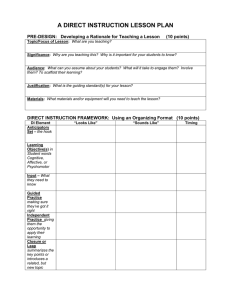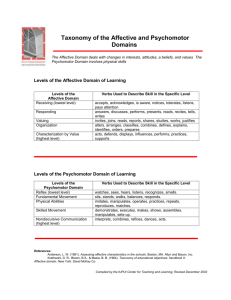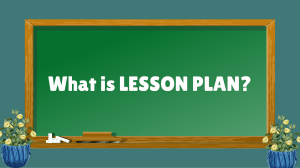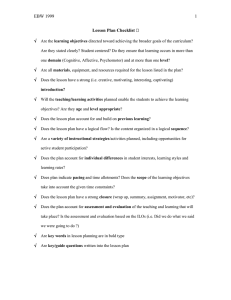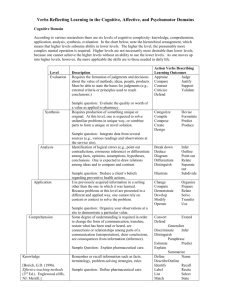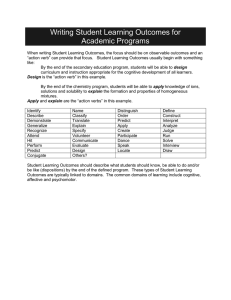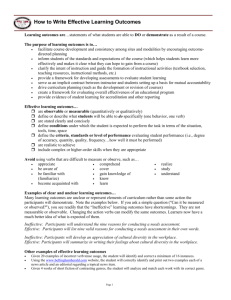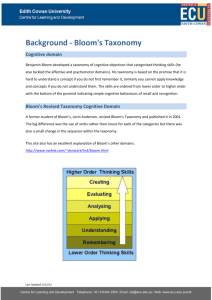Writing outcomes
advertisement
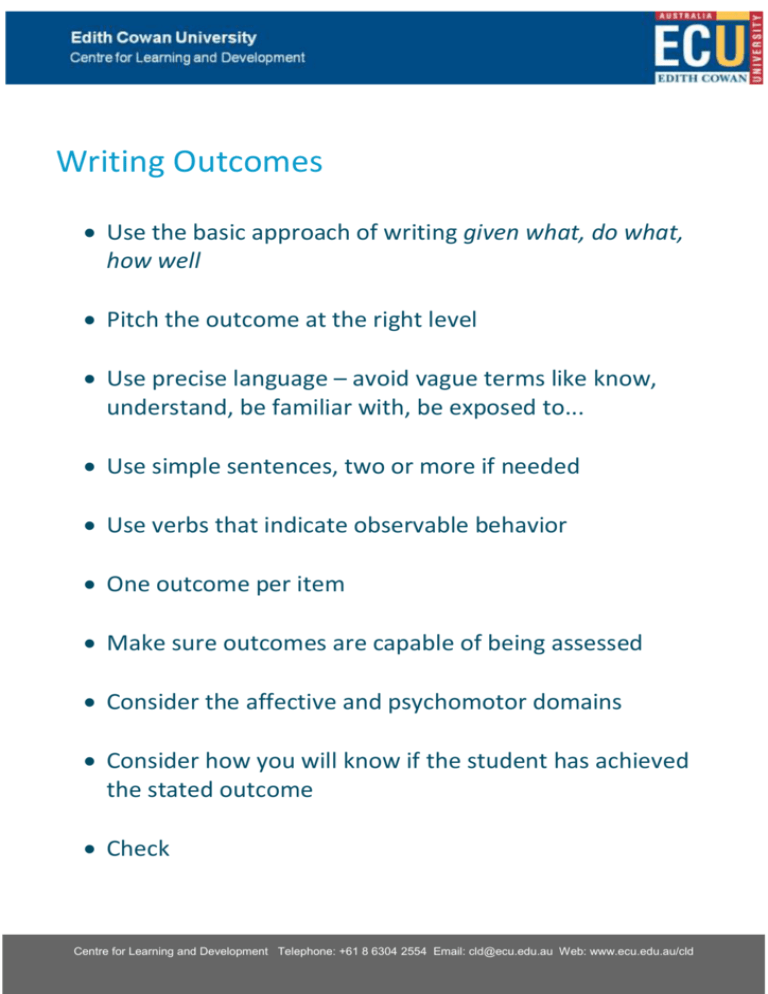
Writing Outcomes Use the basic approach of writing given what, do what, how well Pitch the outcome at the right level Use precise language – avoid vague terms like know, understand, be familiar with, be exposed to... Use simple sentences, two or more if needed Use verbs that indicate observable behavior One outcome per item Make sure outcomes are capable of being assessed Consider the affective and psychomotor domains Consider how you will know if the student has achieved the stated outcome Check Centre for Learning and Development Telephone: +61 8 6304 2554 Email: cld@ecu.edu.au Web: www.ecu.edu.au/cld Use the approach of writing given what, do what, how well Given a small scale DC electrical circuit, successfully complete a problem formulation, solution and solution verification cycle. Given what: a small scale DC electrical circuit Do what: complete a problem formulation, solution and solution verification cycle How well: Successfully Pitch the outcome at the right level Consult the accompanying background information for some description of what is meant by “level” in terms of Bloom’s taxonomy. In general aim for higher order thinking Use verbs that indicate observable behavior Use: Define, describe, enumerate appraise, assess, compare, build, combine, compose, construct, create, design… Avoid Understand, appreciate, become aware of, comprehend, learns, uses, knows, shows interest, participates,.. One outcome per item Outcome statements should not be “bundled” as assessment based on the outcome becomes too complex and unreliable. Outcomes should be capable of being assessed Outcomes should capture important learning and clear and specific enough to be assessable. Each outcome should infer the form of assessment that could be used to determine if the student has achieved the outcome. Consider the affective and psychomotor domains Curriculum 2012 has prescribed several broad outcomes for the affective domain. Learning is not described adequately by just referring to the cognitive domain. Look for opportunities to incorporate affective and psychomotor elements. Check Does it specify the knowledge, skill, ability or disposition to be demonstrated, using an active verb? Can the demonstration of the learning outcome be observed, ideally by more than one assessment method? Does it only relate to one knowledge, skill, ability or disposition? Visit http://intranet.ecu.edu.au/learning/for-academic-staff/curriculum-2012-resources/outcomes
